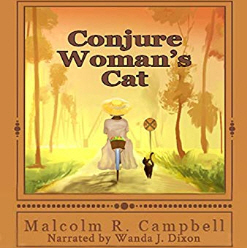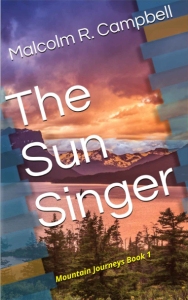In some ways, this post is a shameless promotion. My apologies.
 The four books in my Florida Folk Magic Series have female primary characters. I had already written one book, Sarabande (contemporary fantasy) from a woman’s viewpoint. It’s the opposite of The Sun Singer (the sequel) about a young man following a plotline based on the hero’s journey popularized by Joseph Campbell in The Hero With a Thousand Faces.
The four books in my Florida Folk Magic Series have female primary characters. I had already written one book, Sarabande (contemporary fantasy) from a woman’s viewpoint. It’s the opposite of The Sun Singer (the sequel) about a young man following a plotline based on the hero’s journey popularized by Joseph Campbell in The Hero With a Thousand Faces.
When I began thinking of a sequel to The Sun Singer, I discovered a lot of controversy among writers and mythologists about how a woman would go on such a journey. Many people said the woman would simply follow the standard tropes of the man’s hero’s journey; others thought that was absurd because men and women generally have different mythic focuses. I agreed: I needed a heroine’s journey, not a tweaked hero’s journey.
So after researching mythologists who wrote about strong mythic females, I opted to write Sarabande from a woman’s point of view by using a mythic journey, that of Inanna, an ancient Sumerian goddess, as a basis in a very general way. Research took a long time mainly because I needed to get to the point where the narrative sounded true to a woman’s thoughts and actions rather than to a man pretending to know how a woman would think and feel about the experiences encountered in the story.
 I decided maybe I had accomplished this when a female reviewer, speaking of an assault scene in the novel, said the scene worked and that she had to keep reminding herself it had been written by a male author. The mythic elements and the fantasy genre probably played a lot in my accomplishing this; had the woman been a modern-day character in typical real-life situations, I don’t think my characterization could have come out sounding true–that is, as a woman would think and feel.
I decided maybe I had accomplished this when a female reviewer, speaking of an assault scene in the novel, said the scene worked and that she had to keep reminding herself it had been written by a male author. The mythic elements and the fantasy genre probably played a lot in my accomplishing this; had the woman been a modern-day character in typical real-life situations, I don’t think my characterization could have come out sounding true–that is, as a woman would think and feel.
However, when it came to the “older-than-dirt” African American conjure woman in the 1950s-era Florida Panhandle, this white boy knew better than to write from her point of view. The gulf in our ages, cultures, and experiences was just too great even though the conjure woman is loosely based on a person I knew while in junior high and high school; then, too, I lived within the period when the book was focused and had observed the things I was writing about.
 That’s why the narrator is a cat, something I thought I could get away with since the novels are written in the magical realism genre. That allowed me to do things that wouldn’t have worked in a non-genre book. I was helped in this ruse by having lived with one to three cats in the house since the 1980s when my wife turned me into a cat person. My “take” on how a cat might act and think was probably more believable than trying to write directly from my character Eulalie’s viewpoint. Readers worried more about something bad happening to the cat (Lena) than the people. I didn’t count on that, but I got used to it.
That’s why the narrator is a cat, something I thought I could get away with since the novels are written in the magical realism genre. That allowed me to do things that wouldn’t have worked in a non-genre book. I was helped in this ruse by having lived with one to three cats in the house since the 1980s when my wife turned me into a cat person. My “take” on how a cat might act and think was probably more believable than trying to write directly from my character Eulalie’s viewpoint. Readers worried more about something bad happening to the cat (Lena) than the people. I didn’t count on that, but I got used to it.
The writer’s “trick” is to write around the things s/he can’t possibly write “property.” Sometimes it works, and sometimes it doesn’t work.
–Malcolm
 Malcolm R. Campbell is the author of the contemporary fantasy novel “The Sun Singer.”
Malcolm R. Campbell is the author of the contemporary fantasy novel “The Sun Singer.”